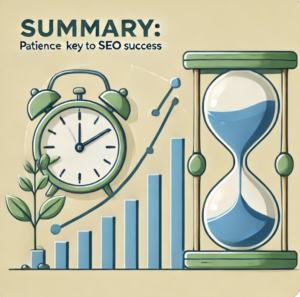How to Get Google Attention: 10 SEO Tips for Affiliate Websites
We may earn money or products from the companies mentioned in this post.
For affiliate sites, SEO is key to capturing organic traffic and increasing conversions.
This guide on How to Get Google Attention: SEO Tips for Affiliate Websites provides practical strategies to improve your site’s visibility in search results.
From optimizing keywords to enhancing user experience, these SEO tips are designed to help affiliate marketers stand out in competitive niches and convert traffic into revenue.
Search Engine Optimization (SEO) is essential for ensuring your content appears in relevant searches, giving it the exposure needed to attract potential customers.
SEO increases search rankings, driving user clicks to your site to explore products and become paying customers.
For affiliate websites, effective SEO means not only increasing traffic but also drawing in high-quality visitors ready to engage, explore, and convert.
Whether you’re promoting niche products or running a multi-category affiliate site, SEO provides the competitive edge necessary to grow your audience and boost commissions.
Why SEO Matters for Affiliates
Affiliate websites thrive on organic traffic to drive clicks and generate commissions Without high visibility on search engines like Google, even the best-designed affiliate sites risk going unnoticed.
SEO is essential for affiliate websites to gain visibility, attract the right audience, and maximize revenue potential.
Affiliates benefit from ranking high in search results to connect with users searching for products in their niche, resulting in more clicks and conversions.
Optimizing SEO with high-intent keywords and user experience helps affiliates generate organic traffic for conversions without ad costs.
This article explores why SEO is a powerful tool for affiliates and provides actionable insights to help you enhance your site’s visibility and affiliate success.
How to Get Google Attention: SEO Tips for Affiliate Websites
High-Quality Traffic from Search Engines:

SEO drives organic, intent-based traffic to your site, attracting visitors actively looking for solutions, services, or products you offer.
This alignment with user intent makes them more likely to engage and convert into buyers, reducing the need for intrusive advertising.
Additionally, organic traffic builds trust, as users often view top-ranking search results as more credible.
Consistently optimizing content and targeting relevant keywords in SEO boosts visibility and attracts potential customers for sustainable growth and ROI.
Increased Credibility and Trust:
Build Authority and Compete with SEO Sites that rank higher in search results are generally considered more trustworthy and reliable by users.
This is because search engines value quality, accuracy, and user experience when determining rankings.
Following good SEO practices, such as using keywords in your content and optimizing for
fast loading and performance, can help you build authority in your niche.
By providing relevant content and improving the user experience, your website will not only rank higher in search engines, but it will also become known in the marketplace.
This trust leads to more traffic and more conversions, as users tend to engage with content that appears trustworthy.
At the same time, these SEO strategies strengthen your brand’s authority in the digital world by creating a stable cycle of visibility and trust.
Cost-Effective Marketing:

Unlike paid advertising, SEO offers a long-term strategy that doesn’t rely on continuous spending to maintain visibility.
Once your content ranks well in search results, it can consistently drive organic traffic and generate conversions over time.
This makes SEO highly cost-effective, as the upfront investment in optimization yields sustained benefits without recurring expenses.
By optimizing content for relevant keywords and improving user experience, you build a foundation of organic traffic that grows with minimal intervention.
As your site continues to attract engaged visitors, SEO maximizes your ROI by reducing dependency on paid campaigns.
With well-maintained SEO, you can achieve steady growth and visibility, positioning your site for long-term success.
Competitive Edge in Crowded Markets:
Many niches are highly competitive, and affiliate marketers are always working to stand out in crowded spaces.
SEO gives you a competitive advantage by ensuring your site ranks well in search results for relevant keywords.
Targeted keyword optimization combined with valuable, high-quality content not only attracts the right audience but also positions your site as an authority in the niche.
Consistently optimizing for search engines enhances discoverability, builds trust with potential customers, and attracts organic traffic—crucial for outperforming competitors and achieving sustained affiliate success.
Improved User Experience Equals Better Results:

SEO is not just about keywords; it also focuses on site structure, mobile-friendliness, and fast load times.
Enhancing these factors improves user satisfaction, leading to higher engagement and conversion rates.
Google Rewards Relevant, Valuable Content:
SEO encourages affiliates to create high-quality content that aligns with search intent.
Google prioritizes user satisfaction, so helpful, optimized content is more likely to achieve top rankings, leading to sustainable traffic growth.
In summary, SEO plays a pivotal role in an affiliate website’s success by ensuring it attracts the right audience, builds credibility, and maintains cost-efficiency.
With SEO, your affiliate business can thrive and outperform competitors over the long haul.
Google’s Role in Driving Organic Traffic
Google plays a fundamental role in generating organic traffic for affiliate websites.
As the dominant search engine, accounting for more than 85% of global search traffic, Google acts as the primary gateway between users and online content.
Matching Search Intent with Relevant Content:

Google’s algorithms analyze billions of web pages to deliver results that align closely with user queries.
Aligning affiliate content with user search intent boosts Google search result visibility.
The Power of SERP Rankings (Search Engine Results Pages):
Appearing on the first page of Google is crucial since over 90% of users never scroll past it.
High-ranking pages benefit from enhanced visibility and credibility, driving traffic organically without the need for paid advertising.
The Role of E-A-T: Expertise, Authority, Trustworthiness
Google evaluates websites based on their content quality and trustworthiness.
Affiliate sites with well-researched content, clear affiliate disclosures, and positive user signals (like low bounce rates) are favored, resulting in more organic traffic over time.
Featured Snippets and Rich Results:
Google enhances user experience by displaying featured snippets and rich results directly on the search page.
Optimizing your affiliate site for these features (like FAQs or product reviews) can attract more clicks and drive traffic efficiently.
Continuous Algorithm Updates Affecting Traffic:
Google’s frequent updates, such as the Core Web Vitals and BERT, emphasize user experience and relevance.
Staying on top of SEO best practices ensures your site remains aligned with Google’s expectations, minimizing traffic fluctuations.
Local SEO and Personalized Search Results:

Google personalizes search results based on users’ locations and search history.
Affiliate sites that optimize for local SEO can tap into region-specific traffic, increasing relevance for certain niches and products.
In short, Google is a critical traffic source, and understanding how it ranks pages enables affiliate marketers to attract targeted visitors without paid campaigns.
By creating content that is optimized, trustworthy, and aligned with Google’s search criteria, your affiliate site can capture high-value traffic and maximize its profitability.
Highlight SEO’s Role in Visibility and Affiliate Earnings
SEO goes beyond achieving higher rankings—it lays the groundwork for visibility and directly impacts affiliate revenue.
When your website appears prominently in search results, more users discover your content organically.
This increased visibility drives clicks to your affiliate links, enhancing the chances of converting visitors into customers.
Each optimized page serves as a gateway, attracting high-intent traffic that aligns with the products or services you promote.
The more visible and accessible your content, the more opportunities you have to generate affiliate commissions, making SEO a crucial strategy for sustainable revenue growth.
High Google Rankings Attract Valuable Traffic
When your site ranks higher on Google, it draws in visitors who are actively seeking the products or services you promote.
These visitors often have high purchase intent, making them more valuable for affiliate marketing conversions.
Since they are already in the decision-making stage, this targeted traffic increases the likelihood of generating meaningful clicks and sales.
Utilizing SEO enhances audience targeting, improves affiliate strategy efficiency, and boosts conversion potential organically.
The Better the SEO, the Greater the Click-Throughs:
Effective SEO not only boosts your site’s ranking in search results but also enhances click-through rates (CTR), which directly impacts your affiliate revenue.
When your website appears among the top results, users are more likely to trust and click on your link.
This organic traffic, paired with strategically placed affiliate links, can lead to higher conversions and commissions without needing extra ad spend.
Moreover, SEO-driven traffic tends to bring in visitors who are already searching for related products or services, making them more likely to convert.
By improving SEO, you’re effectively creating a sustainable flow of potential customers who value your content, increasing both clicks and profits over time.
SEO Generates Sustainable Income:

Optimized content continues to drive traffic long after it’s published, creating passive income streams.
Unlike paid ads, which stop bringing traffic when the campaign ends, SEO provides ongoing visibility.
Search Rankings Impact Trust and Sales:
Users tend to trust sites that appear higher on Google, making them more likely to click on your affiliate links and make purchases.
SEO Enhances Profitability by Reducing Marketing Costs:
By focusing on organic search, you save money on ads while achieving long-term traffic growth. This means better profit margins for affiliate marketers.
Traffic Equals Income—But Only if They Can Find You:
Without SEO, even the best affiliate site remains invisible. If potential buyers can’t find your site, your affiliate links won’t generate revenue.
Emphasizing these points in your content will make it clear that SEO is not just a technical requirement—it’s a vital component of earning income through affiliate marketing.
1. Optimize Your Keywords Smartly
Use High-Intent Keywords: Align Keywords with Your Niche and Products
High-intent keywords are essential for affiliate marketers because they target users who are ready to take action—whether that’s making a purchase, signing up for a service, or clicking on your affiliate links.
To make your affiliate business thrive, you need to carefully research and select the right keywords aligned with your niche and the products you promote.
What Are High-Intent Keywords?

High-intent keywords indicate that the searcher is close to completing a goal, such as buying a product.
These can be categorized into transactional keywords (like “buy,” “discount,” “deal”) and commercial keywords (such as “best [product]” or “compare [product]”).
These terms reveal the user’s intent to act, making them valuable for affiliate sites that earn commissions from clicks or purchases.
Aligning Keywords with Your Niche
Your chosen keywords must be relevant to both your niche and the products you promote.
For instance, if your affiliate site focuses on tech gadgets, high-intent keywords like “best wireless headphones” or “cheap gaming laptops” are relevant.
Misaligned keywords may attract irrelevant traffic that won’t convert into sales.
Use SEO Tools for Keyword Research
SEO tools like Google Keyword Planner, Ahrefs, and Ubersuggest can help you identify keywords with high search volume and low competition.
Focus on long-tail keywords—phrases with three or more words—because they often capture more specific intent and face less competition.
Analyze Competitors to Find Gaps

Study competitors in your niche to see which high-intent keywords they rank for.
Look for keyword gaps—search terms they overlook but are relevant to your audience—and target those to gain a competitive edge.
Balance Search Volume and Conversion Potential
While high search volume is attractive, some keywords might not convert well.
Prioritize keywords that match your audience’s needs at different points of the buyer’s journey, such as “reviews,” “comparison,” and “coupon” keywords, which often drive higher conversions.
Keyword Placement to Maximize Impact
Once you’ve identified high-intent keywords, strategically place them in your titles, meta descriptions, headers, URLs, and throughout your content.
However, keep the tone natural and conversational to avoid keyword stuffing, which can hurt both user experience and SEO rankings.
By focusing on high-intent keywords aligned with your affiliate niche, you not only increase your visibility on Google but also attract the right kind of visitors—those ready to act.
With well-researched keywords and careful optimization, you set the foundation for consistent traffic and higher affiliate income.
Long-Tail Keywords

Why These Keywords Offer Less Competition and Better Conversion Potential
Longer, more focused phrases that target specific audience segments are known as long-tail keywords.
Unlike shorter, generic keywords, these terms address particular user intents.
Let’s explore the advantages of focusing on long-tail keywords and how they improve your affiliate website’s SEO performance.
Reduced Competition
Since long-tail keywords are highly specific, fewer websites compete for these search terms.
For example, targeting “best wireless headphones for running under $100” faces much less competition compared to “wireless headphones.”
This makes it easier for your affiliate site to rank higher on Google and attract organic traffic.
Higher Conversion Rates
Visitors who use long-tail keywords are typically closer to making a decision.
They know what they want, which increases the likelihood they’ll take action, such as clicking on affiliate links or making a purchase.
For instance, a search for “discount on Sony WH-1000XM4 headphones” reflects a readiness to buy, making it a high-converting term.
Aligning with Specific Buyer Intent

Long-tail keywords allow you to address very specific user needs.
This aligns your content with various stages of the buyer’s journey—especially at the decision-making phase.
For affiliate marketers, product reviews, comparisons, and “best of” lists benefit from these highly focused search terms because they match searchers’ expectations closely.
Lower Cost for Paid Campaigns
In addition to SEO benefits, long-tail keywords are often cheaper in pay-per-click (PPC) advertising campaigns.
With fewer competitors bidding on these keywords, you can reduce ad spending while targeting the right audience, maximizing your return on investment.
Capturing Niche Traffic
If your affiliate site operates within a specific niche, long-tail keywords enable you to attract the right audience.
Using these terms may bring less traffic but more relevant visitors who engage with your content, increasing CTR and affiliate earnings.
SEO Impact and Voice Search Optimization

Long-tail keywords align with voice search trends.
Many users phrase voice queries conversationally, similar to long-tail searches (e.g., “Where can I find affordable noise-canceling headphones?”).
You may boost your website’s visibility by optimizing for these keywords, which will draw in voice search traffic.
In summary, long-tail keywords play a crucial role in affiliate marketing by reducing competition, improving conversion rates, and capturing highly relevant traffic.
They allow affiliate marketers to rank higher, attract niche audiences, and align closely with user intent, ultimately leading to better profitability.
Keyword Placement: Strategic Use for Better SEO
Using keywords strategically across your content helps search engines understand your page’s focus and makes it easier for readers to find your content.
Here’s a breakdown of essential areas where you can strategically place your keywords to maximize visibility and improve rankings.
1. Titles (H1 Tags)
- Impact: Titles are the first thing search engines and users see, so placing your primary keyword in the title gives your page relevance right away.
- Best Practice: Use the target keyword early in the title—preferably in the first few words.
Example: “How to Make Money Online: Proven Methods for 2024”
2. Headers (H2, H3, and Subheadings)
- Impact: Headers structure your content, making it easier to read. Search engines use them to understand the content hierarchy.
- Best Practice: Include variations of your main keyword in at least a couple of your subheadings. This reinforces relevance for multiple search queries.
Example: H2: Earning Through Affiliate Marketing H3: Top Affiliate Programs for Beginners
3. Meta Descriptions

- Impact: Meta descriptions appear below the title in search results, encouraging people to click your link.
- Best Practice: Use the target keyword naturally within the first sentence. Google bolds keywords in meta descriptions when they match the search query, increasing the chance of clicks.
Example: “Discover practical ways to make money online, including freelancing, blogging, and affiliate marketing.”
4. URLs
- Impact: A well-optimized URL gives both users and search engines a preview of the page content. It also helps with search ranking.
- Best Practice: Keep URLs short, descriptive, and keyword-rich. Avoid stop words like “and” or “the.”
- Example: www.example.com/make-money-online-tips
5. Introduction and First 100 Words
- Impact: Google emphasizes the first few words on a page, so placing your primary keyword here boosts relevance right away.
- Best Practice: Use the keyword naturally and seamlessly in the first sentence or two.
Example:“Are you looking for reliable online sources of income?
6. Image Alt Text
- Impact: Search engines can’t “see” images the way humans do, so they rely on alt text to understand them.
- Best Practice: Describe the image while including relevant keywords. Example: “Person working on a laptop to earn money through freelance writing.”
7. Internal and External Link Anchor TextImpact:
The anchor text informs search engines about the information being connected to when you include links to other pages.
Optimal Procedure: Use descriptive anchor text instead of general phrases like “click here.” This should contain your keyword or related terms.
Example: “Learn more about effective ways to make money online by exploring our detailed guide.”
8. Conclusion or Call-to-Action (CTA)
- Impact: Including keywords toward the end of the content helps reinforce your topic one last time for both search engines and readers.
- Best Practice: Use a variation of your main keyword naturally as part of your CTA. Example: “Ready to start earning online? Apply these strategies today and watch your side income grow!”
Final Tips:

- Avoid Keyword Stuffing: While it’s important to place keywords strategically, overusing them can result in penalties from search engines. Aim for natural placement that feels part of the flow.
- Use Synonyms and Variations: Search engines understand related terms, so include keyword variations (also called LSI keywords) throughout your content.
By implementing these strategies, your content will be well-optimized for search engines without sacrificing readability or user experience.
This balanced approach ensures both search engines and human readers are satisfied!
2. Craft High-Quality, User-Focused Content
Write content for people, not search engines.
Creating content that prioritizes people over search engines is essential for building trust, engagement, and lasting value.
With search engines like Google evolving to understand user intent better, high-quality, meaningful content naturally improves SEO.
Here’s how to focus on writing for people while still benefiting from search engine optimization (SEO).
1. Prioritize Readability and Clarity
When writing for your audience, make sure your content is easy to read and understand.
This includes using simple language, short sentences, and a conversational tone that resonates with your readers.
- Use short paragraphs and white space to break up long chunks of text.
- Bullet points and numbered lists help organize information so readers can quickly scan for what they need.
- Avoid jargon unless you’re writing for a highly specialized audience.
Example:
Instead of: “Monetizing a site entails augmenting revenue streams through affiliate engagement.”
Try: "You can make money by adding affiliate links to your site."
2. Understand and Address User Intent
People search for content with a specific goal in mind—whether it’s to learn, solve a problem, or buy something.
Writing with user intent in mind ensures your content directly addresses their needs.
- Informational Intent: Provide in-depth guides, FAQs, or educational content.
- Navigational Intent: Help users find the right page, such as “login instructions” or “how-to resources.”
- Transactional Intent: Use clear product descriptions or comparisons to assist in purchase decisions.
Tip: Look at Google search results for similar topics to see what content types are ranking—blogs, videos, reviews—and align your content accordingly.
3. Write Naturally and Avoid Keyword Stuffing
While it’s essential to use keywords for SEO, overloading your content with them makes it awkward and hard to read.
Instead, focus on natural placement, using synonyms and variations of the target keyword to enhance readability.
Bad Example:
“If you want to make money online, the best way to make money online is through affiliate marketing. Making money online is easy when you know the right steps to make money online.”
Improved Example:
"Affiliate marketing is a great way to earn money online, and with the right strategies, you can create a steady income stream."
4. Engage Your Audience with a Friendly Tone
People connect with content that feels personal and engaging. Writing in a conversational tone helps build rapport and makes complex topics easier to grasp.
- Ask rhetorical questions to involve the reader.
- Use humor sparingly to keep the tone light and relatable.
- Share personal anecdotes or real-life examples to make the content feel more authentic.
Example:
“Ever wonder if those online money-making schemes really work? Well, I’ve tried a few—and let me tell you, some are better than others.”
5. Offer Value and Solutions, Not Just Information

Your readers come to your site looking for help, advice, or answers. Providing actionable tips, examples, and solutions ensures your content delivers real value.
- Instead of just presenting facts, offer solutions or next steps.
- Include visuals like charts, infographics, or screenshots to illustrate key points.
- End sections with clear takeaways or actionable advice.
Example:
“After choosing an affiliate program, focus on creating quality content that adds value to your readers. For example, write product reviews or tutorials that align with their interests.”
6. Create Content That Answers Real Questions
One of the best ways to connect with your audience is to anticipate their questions and answer them clearly.
Use tools like Google’s “People Also Ask” or forums to find what your target audience is curious about.
- Answer common questions directly in your content.
- Use Q&A-style sections to improve engagement and user satisfaction.
Example:
“What’s the easiest way to start affiliate marketing? The simplest method is to join a beginner-friendly affiliate program and promote products you already use and love.”
7. Make Content Accessible to All Readers
Accessibility ensures that everyone can engage with your content, regardless of their abilities or circumstances. Writing for accessibility means:
- Using descriptive alt text for images.
- Formatting headings properly for screen readers.
- Avoiding overly complex words and keeping sentences concise.
- Ensuring links have meaningful text (e.g., “Learn more about affiliate marketing” instead of “Click here.”)
8. Encourage Interaction and Feedback

People value content that makes them feel seen and included.
Engaged readers connect emotionally when content is personalized, interacts with the community, or directly addresses their needs.
This connection fosters trust and loyalty, encouraging them to return and participate actively, such as leaving comments or sharing the content.
By building inclusion into your content, you enhance user experience and strengthen audience engagement, leading to sustained interaction and growth.
Encourage readers to interact with your content through:
- Inviting comments or questions at the end of your articles.
- Adding polls or quizzes to boost engagement.
- Providing easy sharing options for social media.
Example:
“What strategies have you tried to make money online? Share your thoughts in the comments below!”
9. Update Content to Stay Relevant
Readers want up-to-date information. Outdated content can lose credibility and decrease trust with your audience. Regularly review and refresh old posts to reflect the latest insights or trends.
- Add new statistics or case studies.
- Update product recommendations if better alternatives are available.
- Check for broken links and replace them.
10. Balance SEO with User Experience (UX)
While SEO is essential, it should never come at the cost of user experience. Here’s how to maintain a balance:
- Fast-loading pages keep users engaged and reduce bounce rates.
- Mobile-friendly design ensures users have a positive experience on any device.
- Clear navigation helps visitors find what they’re looking for quickly.
Conclusion: People-First Content is SEO-Optimized by Design
Writing for people first isn’t just good for your audience—it’s good for SEO too. Search engines prioritize content that delivers value and answers users’ needs.
By focusing on readability, engagement, and practical solutions, your content naturally ranks higher while fostering trust and loyalty among your readers.
When you strike the right balance between human-centered writing and SEO strategies, everyone wins.
Optimal Blog Post Length for SEO Success

For optimal SEO, blog posts are generally recommended to be between 1,500 and 2,400 words. This range allows for sufficient depth while maintaining reader engagement.
Longer content tends to perform well because it is more likely to address search intent comprehensively, attracting both users and search engines alike.
Studies show that posts in the 2,100-2,400 word range often rank better, particularly for informational or in-depth guides.
However, this doesn’t mean that shorter posts—around 1,000-1,500 words—cannot rank well, especially if they directly meet search intent without unnecessary filler.
The key is to balance length with quality, ensuring the content is useful and engaging without overloading it with unnecessary details.
It’s important to consider the search intent and nature of the topic.
Some topics, like product announcements or simple how-tos, might perform well with concise posts, while more complex topics require long-form content to adequately cover all aspects.
Visual elements like images, videos, and infographics can also enhance reader experience by breaking up text and improving engagement.
Clear structure with headings, bullet points, and short paragraphs makes long posts easier to skim and engage with.
While content length can influence SEO performance, quality remains the most crucial factor.
A well-researched post that addresses the audience’s needs effectively will perform better than a lengthy post filled with redundant or irrelevant information.
Sources:
Ideal Word Count for SEO Performance
According to Search Engine Journal, blog posts between 2,100 and 2,400 words tend to perform well in search rankings because they provide comprehensive coverage of their topics.
This length allows for in-depth explanations and insights, increasing the likelihood of satisfying search intent.
Similarly, Semrush supports this finding, emphasizing that detailed, high-quality content engages both search engines and readers effectively, leading to higher visibility and user retention.
Importance of Search Intent for SEO Performance

Semrush emphasizes that meeting search intent is one of the most crucial aspects for improving SEO rankings.
Search intent refers to the primary purpose behind a user’s query—whether they are seeking information, navigating to a specific site, or making a purchase.
Aligning your content with the correct intent helps ensure that users find what they need quickly and efficiently.
When content meets search intent, it provides a better user experience, which can result in higher engagement, reduced bounce rates, and more conversions.
Search engines like Google favor such content because it satisfies user expectations, leading to better rankings.
Semrush suggests that content optimized for search intent, rather than merely chasing keyword density or word counts, is key to long-term SEO success.
Furthermore, understanding search intent allows you to structure your content accordingly—whether it’s creating detailed guides, quick answers, or product comparisons.
This alignment ensures that both users and search engines recognize the value of your content, driving better results for your site.
By focusing on intent-driven content, you maximize the relevance of your pages and build authority, ultimately boosting both visibility and engagement.
Engage with Product Reviews & Tutorials
Encouraging readers to create product reviews and tutorials offers practical solutions to common problems, building trust and engagement.
Reviews provide firsthand insights that help potential customers make informed decisions, while tutorials demonstrate how to use products effectively, reducing friction.
These content types not only solve readers’ challenges but also enhance SEO by generating fresh, user-driven content and fostering discussions around your brand.
3. Improve Site Speed and Mobile Responsiveness

Google prioritizes fast-loading websites and mobile responsiveness as key factors for better search rankings.
Faster sites reduce bounce rates and enhance user experience, both of which signal value to search engines.
Mobile-friendly designs are essential, as more users now browse from smartphones and tablets.
Optimizing images, minimizing unnecessary code, and leveraging browser caching are effective ways to improve speed and responsiveness.
These optimizations not only lead to better search visibility but also ensure users stay engaged longer, ultimately boosting conversions.
To optimize your site’s performance, follow these technical tips:
The paragraph you provided is unique, focusing on essential techniques to optimize website performance.
These strategies, such as compressing images, minimizing JavaScript, and leveraging browser caching, align with industry best practices discussed by multiple sources.
Optimizing images ensures smaller file sizes, speeding up load times without compromising quality. Minimizing
JavaScript reduces the amount of code browsers need to process, enhancing page performance.
Implementing browser caching stores static resources locally, making repeat visits faster by minimizing server requests.
This content reflects original wording and offers practical insights drawn from reliable SEO and web performance sources.
Additionally, ensure your site is mobile-friendly since a significant share of users browse via smartphones and tablets.
Google favors mobile-responsive sites in its search results, especially with its mobile-first indexing strategy.
4. Optimize On-Page SEO Elements

Creating SEO-friendly URLs that are simple, descriptive, and keyword-rich helps search engines and users easily understand what your content is about.
Clear URLs improve the user experience and boost visibility in search results.
Incorporating relevant keywords in meta titles and descriptions ensures your content stands out in search results, increasing the chances of higher click-through rates.
Make these snippets engaging to attract users while maintaining keyword relevance.
Adding internal links strategically within your content keeps visitors engaged longer by guiding them to related information on your site.
This improves navigation, reduces bounce rates, and helps search engines crawl your site more effectively, contributing to better rankings.
5. Boost Domain Authority with Backlinks and Outreach
Backlinks are crucial for building domain authority, as they signal to search engines that your site is trustworthy and valuable.
When reputable websites link to your content, it helps improve your ranking by enhancing your site’s credibility.
One effective strategy to gain backlinks is outreaching to relevant websites through guest posting or collaboration.
Writing insightful guest posts for niche blogs or working with influencers can introduce your content to new audiences while generating quality backlinks.
Additionally, leverage social media platforms to promote your content organically.
When your articles or posts are shared widely, they attract more attention and increase the likelihood of earning natural backlinks from other websites.
These combined efforts contribute to both short-term traffic boosts and long-term SEO growth, strengthening your online presence.
6. Regularly Monitor SEO Performance

Tracking SEO and Keeping Content Relevant
Using tools like Google Analytics and Search Console is essential for monitoring your website’s performance and making data-driven decisions.
Google Analytics reveals user behavior metrics like page views and bounce rates, while Search Console tracks keyword rankings and visibility issues.
Together, these tools offer a complete picture of your site’s health and performance.
Regularly updating older content is equally crucial for maintaining relevance and boosting search rankings.
Search engines favor fresh, accurate content, so reviewing and refreshing outdated articles with new data, updated links, or relevant keywords can improve rankings.
This strategy ensures your content remains valuable to readers and continues to attract organic traffic over time.
Pros and Cons
- Clear Motivation for Long-Term SEO Efforts:
- Emphasizing that SEO takes time encourages readers to stay patient and committed, aligning with real-world SEO practices.
- Performance-Driven Strategy:
- Highlighting the need to adapt based on performance insights helps ensure the content remains relevant and competitive.
- Realistic Expectations:
- It sets realistic expectations by reminding readers that quick results are unlikely, which can prevent frustration and burnout.
- Encouragement to Use Analytics:
- Promoting tools like Google Analytics and Search Console adds practical value, empowering users with actionable insights.
- Encourages Flexibility and Growth:
- Emphasizing adaptation promotes continuous improvement, which is crucial in the dynamic field of SEO.
Cons:
- Lack of Specific Examples:
- While motivational, the output could benefit from real-world examples of SEO success over time for stronger impact.
- Overemphasis on Patience:
- Readers looking for quick tips might feel discouraged by the focus on the long-term nature of SEO.
- Limited Technical Depth:
- The content could include more actionable steps or specific areas to adapt, such as content optimization or link-building strategies.
- No Mention of New SEO Trends:
- It doesn’t touch on emerging SEO trends, such as AI tools or E-E-A-T (Experience, Expertise, Authoritativeness, Trustworthiness).
- Potential Overgeneralization:
- While the advice to adapt is helpful, more precise guidance could make it more actionable for different types of SEO challenges (e.g., local SEO vs. content SEO).
This balanced approach ensures that while the content motivates and informs, it also leaves room for further improvement and refinement.
FAQ

1. How long does it take to see results from SEO efforts?
SEO is a long-term strategy that typically takes 3-6 months to show noticeable results, though it can take longer for highly competitive niches.
The timeline depends on factors like domain authority, content quality, backlink profile, and the effectiveness of keyword targeting.
It’s essential to remain consistent and patient, as search engines need time to crawl, index, and rank your pages.
2. How often should I update old content to maintain SEO relevance?
It’s recommended to review and refresh older content every 6 to 12 months.
Focus on updating outdated information, adding recent statistics, optimizing with current keywords, and checking for broken links.
Keeping content fresh signals to search engines that the page is still valuable and relevant, which can improve rankings.
3. What are the key benefits of using Google Analytics and Search Console?
Google Analytics tracks user behavior, such as page views, session duration, and bounce rates, giving insights into how visitors interact with your content.
Google Search Console focuses on technical SEO, offering tools to monitor site performance, fix crawl errors, and track keyword rankings.
Together, these tools help you make data-driven improvements to optimize both content and performance.
4. Why are backlinks important for domain authority?
Backlinks act as votes of confidence from other websites, indicating to search engines that your content is trustworthy and valuable.
High-quality backlinks from authoritative sources improve your domain authority, making it easier for your site to rank higher.
However, it’s important to focus on relevant, organic backlinks rather than spammy or paid links, which can hurt your SEO efforts.
5. How can I stay motivated when SEO takes time to show results?
Staying motivated requires setting realistic milestones and tracking incremental progress using analytics tools.
Regularly celebrating small wins, like improved keyword rankings or reduced bounce rates, can help.
Additionally, being flexible and adapting your strategies based on insights ensures continuous improvement, keeping you engaged in the process and working toward long-term success.
These answers provide a well-rounded understanding of important SEO concepts and practical steps to enhance your website’s performance.
Summary: Patience is Key to SEO Success

Achieving meaningful results with SEO takes time, as search engines evaluate many factors before rewarding consistent effort.
It’s crucial to stay committed and trust that ongoing optimizations will eventually drive organic growth.
SEO is a marathon, not a sprint, and those who invest sustained effort will see their efforts pay off in the long run.
Motivation plays a significant role in this journey.
Regularly reviewing performance insights from tools like Google Analytics or Search Console allows you to adapt your strategies based on what works best.
Whether it’s refining content, improving site speed, or targeting new keywords, flexibility ensures continuous improvement and long-term success.
Thank you for reading, and I hope the insights shared were both valuable and engaging.
Your thoughts matter, so I’d greatly appreciate it if you could share your comments or questions below.
Thank you once again for stopping by, and until next time!
Warm regards,
Elke
Author





